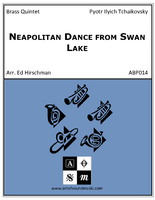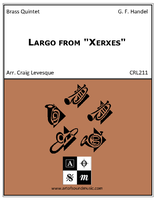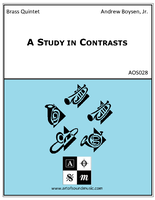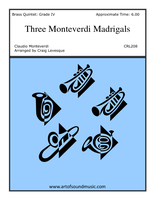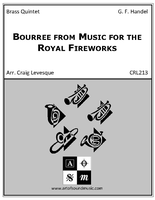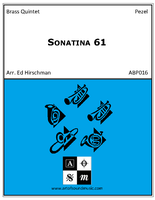Galop
| Composer | Gale, Jack |
|---|---|
| Duration | 1 |
| Ensemble | Brass Quintet |
| Genre | Modern Classical |
| Grade | 5 |
| Model Number | AOS1548 |
| Category | Brass Quintet - All, Classical, Grade 5 |
A brilliant, dissonant showpiece. Very effective but difficult both musically and technically.
Performance Notes
Galop should be played as fast as is comfortable. The 1½/2 bar is simply a cut time 3/4 bar. At bar ll the trombonist can give the cut-off and downbeat in one gesture, setting the tempo with its half notes. The downbeat of bar 22 should be reached without hesitation. The trumpets should begin their held notes after a slight pause and add the trill gradually. Once again, the trombonist can give the cut-off and the downbeat of bar 25 simultaneously. There should be a moment of silence before bar 40 and the Tuba can set an uncomfortably fast tempo for the final upward run. The last few notes are to be chosen by the performers. They should be as high or low as possible as indicated but should be loud and brassy as well.
Precision and accuracy should be stressed and the tempo should be consistent. However, the volume should border on harshness.
Galop is written for either a brass quintet or brass choir. Gale writes that the piece “should be played as fast as possible… precision and accuracy should be stressed, and the tempo should be consistent. However, the volume should border on harshness.” The work is rhythmically complex with multiple meter changes, including bars of 1.5/2 and features a trombone cadenza. The piece ends with the performers playing as fast as possible to their highest or lowest note.
Jack Gale is masterful in his approach to brass writing. Galop is appropriate for college students due to the rhythmic challenges and the range, which ascends to f”’, this piece would work well on a quintet recital.
Ryan Gardner, professor of trumpet, University of Colorado Boulder
January 2024 ITG Journal



